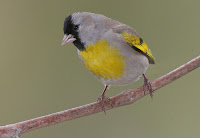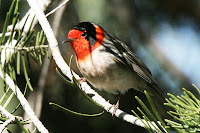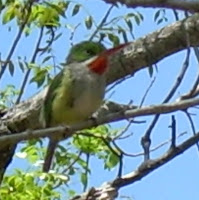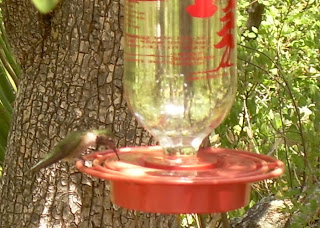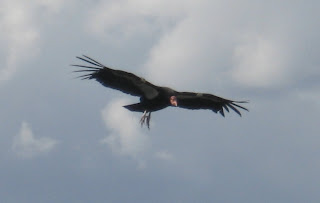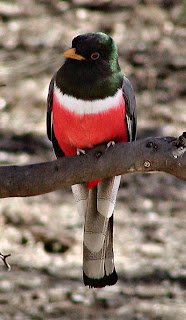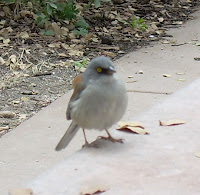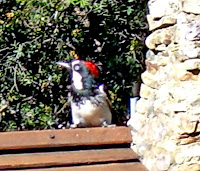October 13-20: New Zealand: South island
We left LAX on the 13th and flew non-stop to Auckland, NZ. My veg food didn’t get on board, but the staff was accommodating and I finally got some food. The individually controlled movies were a cool feature, but thank goodness for Ambien. I had a much better night’s sleep than I could have ever imagined. Since we flew across the International Date Line, we arrived in Auckland in the early morning on October 15. We then traveled by plane south to Queenstown which is known as the “Adventure Capitol of the World.” It rained much of the time there and there was even a little snow. It is very beautiful, sitting right on Lake Wakatipu with snow capped mountains called the Remarkables all around.
When we arrived, we went on a jet boat ride in the lake. We squished inside the boats as Mark, our guide explained the rules to us. It was fun getting some fresh air after all that time on planes and busses. Mark pulled many 360's on the water which got everyone very wet. After checking into our hotel, we met up and walked to the Skyline Gondola which rises steeply from Queenstown. The view from the top was awesome and we happened to catch a rainbow over the town.
That night a 6.7 earthquake shook me awake around 1:30am. The next morning, we found out that epicenter was about 38 miles west of our destination for that day. We were a little concerned about avalanches, but our bus driver, Dawn, assured us we would be OK.
We loaded on the bus and headed for Milford Sound. The drive to Milford Sound was filled with waterfalls and snow-capped mountains. Along the way I also saw lots of White-backed Magpies which looked very much like crows except for their brilliant white backs that shone when they flew.
Once we arrived at Milford Sound in the fjord lands, we went on a three-hour scenic/lunch cruise. While waiting for the cruise to leave, I was able to catch my first glimpse of New Zealand’s chaffinches which then seemed to be everywhere. The scenery on the cruise again filled with waterfalls. Some of the waterfalls would literally get blown away by the wind before they could reach the water below. The most exciting part of the trip for me though was the three Fjordland Crested Penguins we saw from the bow of the boat. They hopped among the rocks and jumped into the water. I had never expected to see penguins!
I had scheduled a birding trip on Lake Dunstan near Cromwell, but it was canceled due to the horrible weather we were having. Undaunted, I set out on Wednesday morning for some “lammie” pictures. I knew there was a farm just outside the town and decided to walk to it and get some pictures. I took my bins so that I could bird along the way. It turns out that I waked (according to Google maps) 9.8 kilometers one way which makes about 12 miles round trip. Wow! No wonder I was tired and had sore feet at the end of the day. But it was all worth it because this was the only real birding I got to do in New Zealand.
The first birds I saw were a small flock of silvereyes acting very warbler-ish at the ends of a tree. Among them I saw my first “Blackbird” which looks like a completely black robin. In the lake were some New Zealand Scaup and Australian Coots. Underneath a conifer tree was a single Song Thrush among several Redpolls. When I finally reached first a deer farm, then a sheep farm, and then a cattle farm all in the same general vicinity, I checked out the birds in the fields. Among the many White-backed Magpies were also some Island Pied Oystercatchers which looked and acted like typical oystercatchers. The sheep were quite shy and took their lammies with them almost as soon as I got close to the fence, but I did manage a few good shots while I had a bit to eat (some NZ cheddar, crackers, and a power bar). Tired, cool and wet, but happy, I headed back to the hotel. That night on the way to a bar called Minus Five Degrees (where they dress you in parkas, snow boots, and mittens, take you into a room make, quite literally, of ice and serve you a vodka drink in a glass made of ice – just what I needed after the cold and wet of the day!), I spotted a Yellowhammer and several Red-billed Gulls.
On Thursday we left Queenstown and started toward Mt. Cook, New Zealand's highest mountain. Although the bus drove to the viewing point, we couldn't see Mt. due to the clouds. The next day we get a good view of it while driving towards Christchurch along Lake Pakaki. This lake is incredibly beautiful! It’s water is tropical blue and so clear. I wanted to jump in, but I’m sure I would have turned to a popsicle in a instant.
Our last stop in New Zealand was Christchurch. I loved this place even though we were only there less than 12 hours. It’s a very English city and was much warmer and sunnier than we’d experienced anywhere in New Zealand. A few of us spent some time exploring the pubs and found a terrific Thai restaurant that was so good I licked my plate clean!
October 20 – 26 (Fiji island)
On Saturday, we arrived into Nadi, Fiji Island. The Hideway Resort was our home here. Ahhhh! Warmth and relaxation! The sun didn’t really want to show it’s face for the first two days, but it was warm and I didn’t care. I didn’t get to do much birding here, but there were both Common Mynas and Jungle Mynas everywhere.
On Sunday, a few of us went to the Kula Ecopark which housed a whole bunch of caged birds. I got to see a lot of Fijian birds, but to me, they all looked sad to be there. The natural birds I the park where all well hidden in the trees, and, not knowing the vocalizations, I wasn’t able to ID any of them.
On Tuesday, some of us started on what we thought was to be a kayaking trip. It turned into “a three hour tor, a three-hour tour!”, Anyway, this story is better said by one of my fellow travelers, Pam West. Here’s the story blatantly stolen from her blog:
…nine brave souls embarked on the adventure of our entire trip. We had originally signed up for a kayaking trip, but because of all the rain the road leading to the river had been washed out. So the river company instead treated us to a whitewater rafting trip on the Upper Navua River.
The ride up to the river was the scariest thing I had ever experienced. It was a steep and very narrow mountain road and I just kept praying that the bus wouldn't slip off the edge into a deep gorge. Once we made it to the top, we had to walk about 20 minutes through a muddy slippery path to the river. We loaded up two rafts and off we went. Talk about awesome. Unfortunately I didn't have my camera, but the brochure referred to this river as the "Fiji's Grand Canyon" and I concur.
We rafted for 15 miles and then the "fun" began. We jumped on the bus to take us back but shortly after we started out, the bus became mired in mud. We jumped back out and the guides told us women to just start walking and they would pick us up. Inez, Joe & I followed their directions. About an hour or so later, Brian, Tony, Connie & Pier caught up to us. The monsoon rain soon started and after walking nearly 3 hours or approximately 7 miles in a jungle rain forest, the bus finally comes to our rescue. We were cold, thirsty & hungry, and our feet & legs were killing us. But it certainly didn't dampen our spirits. We laughed about it all the way back to the resort. And of course we became the talk of the group over the next couple days.
My only additions to Pam’s narrative would be the two birds I managed to see without binoculars while we were walking through the Fijian backcountry jungle: Golden Dove (totally unmistakable in its brilliantly golden plumage) and Scarlet Robin.
On Wednesday, a few of us took a cab ride to Suva to check out the Suva Museum which house the leather boot soles of Thomas Baker. He was a missionary who was cannibalized right down to his boots, but when they got to the boot soles, the cannibals found him inedible. His boot soles, along with the fork, cooking pot and other utensils used to consume him are house in the Suva Museum. We also did a little shopping here and ate at a wonderful Indian restaurant called (I believe) Gandhi’s Curry House. We then stopped at a Fijian Cultural Center on the way out of town. A lovely day!
After all that running around, I was glad to hang by the pool and soak up the sun on Thursday. It was a very quiet day as almost all of the others went on a sailboat trip for the entire day.
While not a birding trip specifically, I did get to add a few species to the world list and make a few friends in the process. Not sure I would go back to New Zealand unless it was later in the spring or in their summer months, but I would go back to Fiji in a second. The people there were so nice and the food was awesome!
You can check out my pictures from this trip at: Picasa
